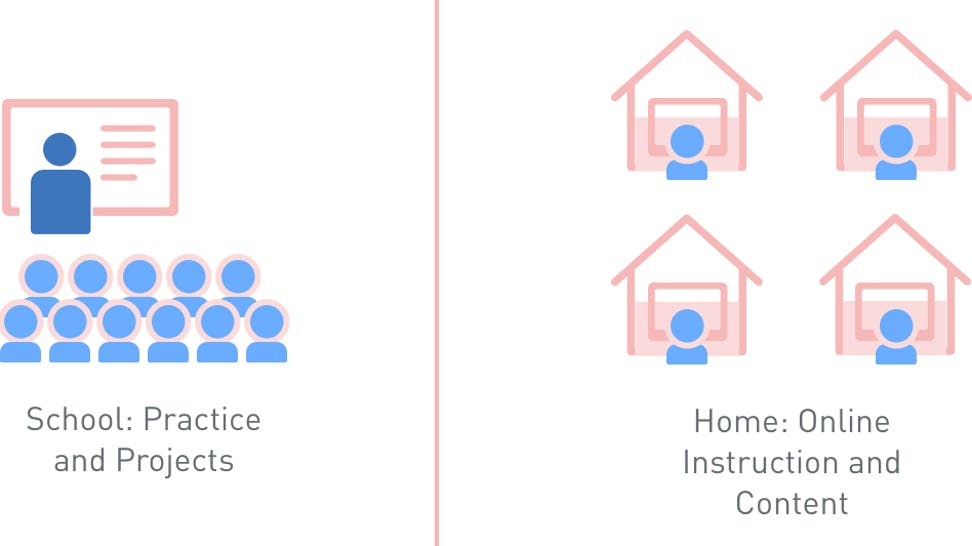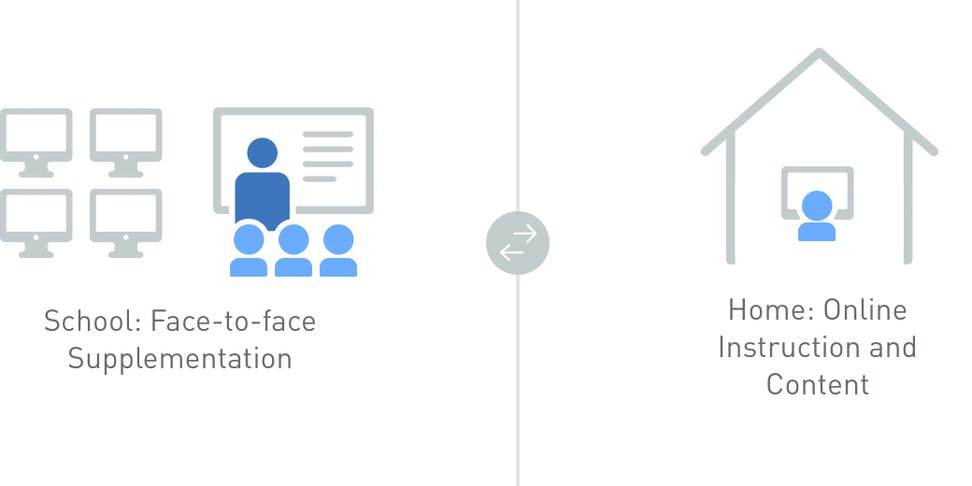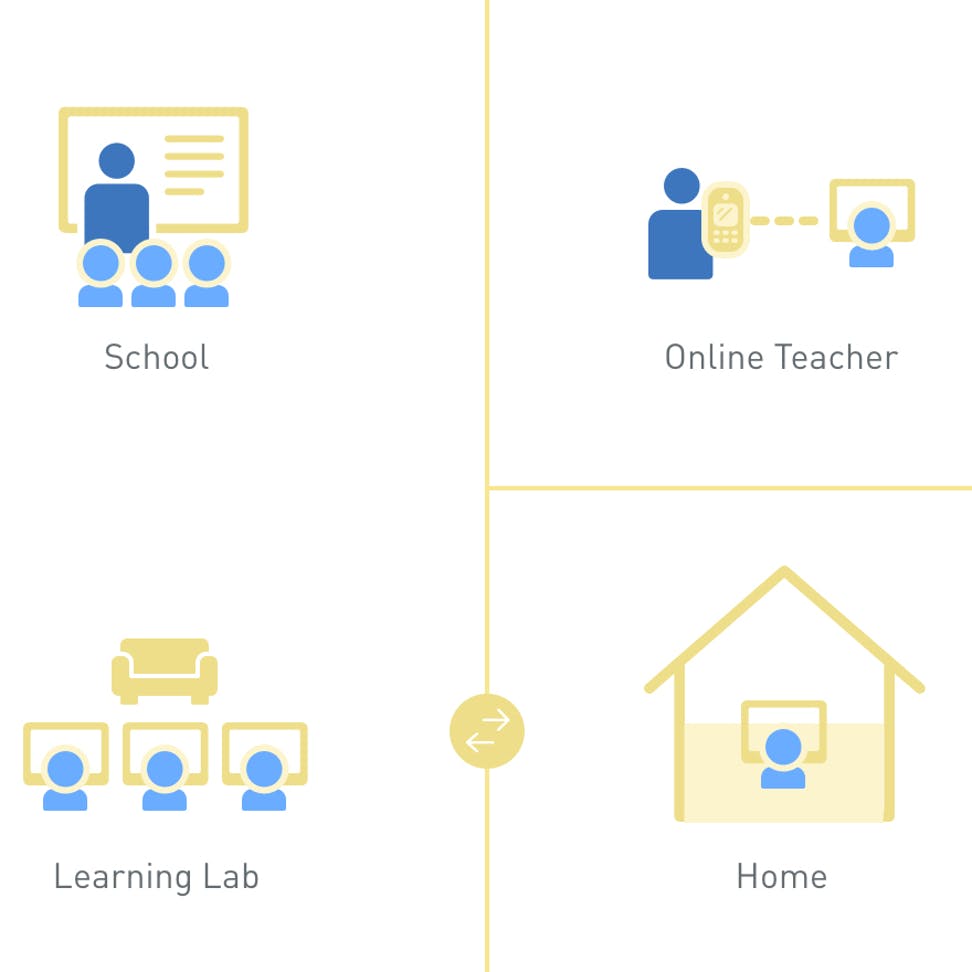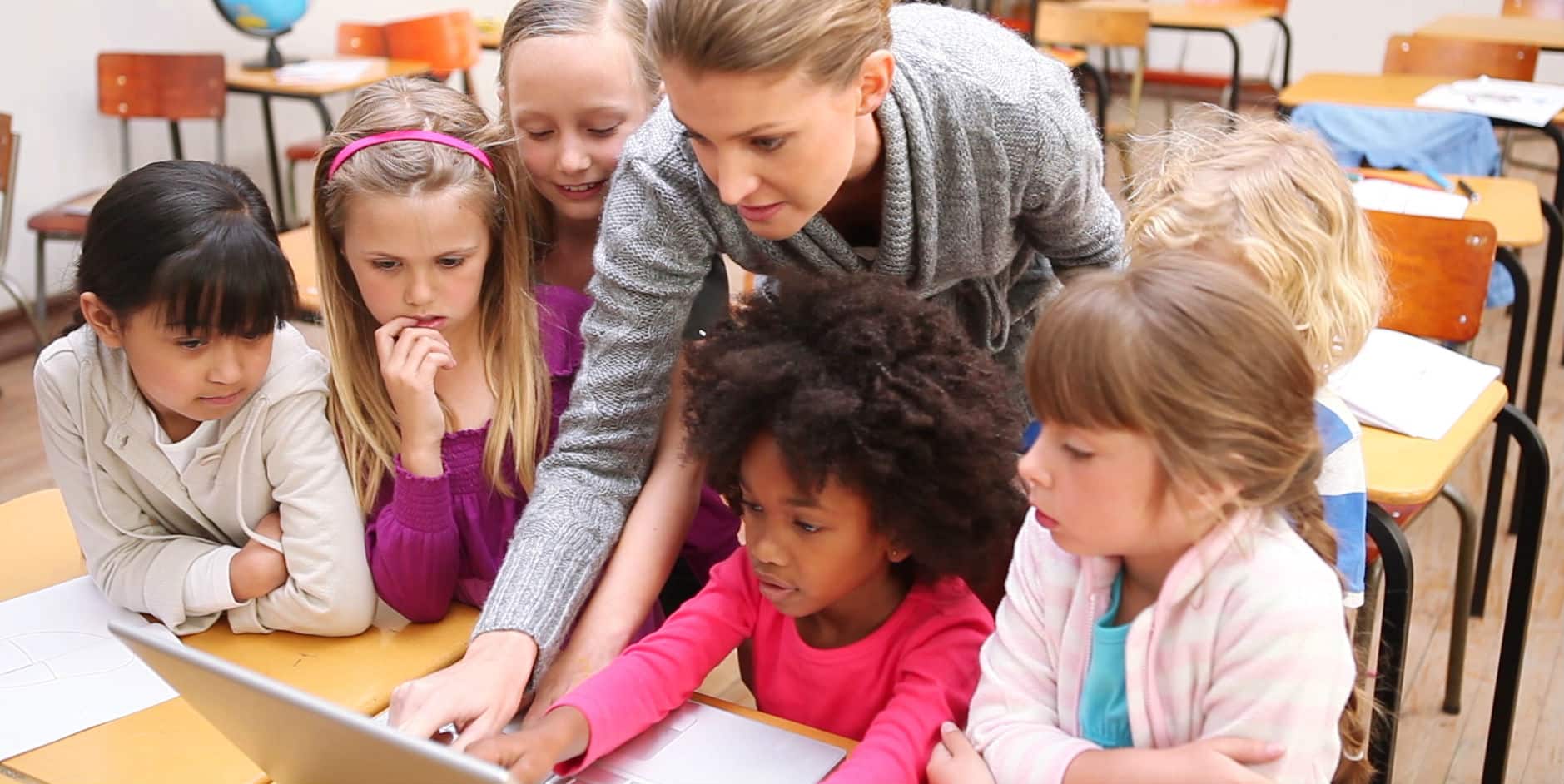In all the buzz about education in times of COVID, here’s some news you might not have seen: According to our recent survey conducted in partnership with Bay View Analytics, 97% of teachers reported in April 2022 that they were teaching in-person. Yet only 85% said they preferred in-person instruction—a 12% difference. Similarly, a recent Pew Research survey conducted in April and May of this year found that 80% of teens were attending school completely in-person, yet only 65% of them said they preferred completely in-person instruction—a 15% difference.
Though the K–12 teachers and students who prefer remote and hybrid learning are a minority, they are a sizable enough minority that their views shouldn’t be dismissed. For schools that take seriously the needs and preferences of these stakeholders, now is the perfect time to consider how blended learning can help reimagine resources and scheduling to meet the needs of these students and teachers. Three blended learning models, in particular, seem best suited to meeting the needs of teachers and students who prefer remote or hybrid instruction.
Flipped Classroom: Make the most of independent and in-class learning

The Flipped Classroom is a blended learning model that flips the traditional relationship between class time and homework. Students learn at home via online coursework or pre-recorded video lessons, and class time is focused on teacher-guided practice or projects.
The core principles of the model are immensely relevant as some families and schools continue to consider both part-time and full-time distance learning. It essentially asks: What activities are best for independent learning versus learning together? The answers can help educators maximize time spent with students, regardless if it’s in-person or virtually.
Online learning resources offer an effective way for students to learn many basic facts and skills on their own. Videos that teachers create or curate—individually or as grade-level or departmental teams—can provide effective coverage of basic content. As an added benefit, students can speed up, slow down, and replay videos as needed. Quizzes and adaptive learning software give students opportunities to review content and practice basic skills with immediate feedback.
In short, when it comes to foundational learning at the bottom of Bloom’s Taxonomy or the lower levels of Webb’s Depth of Knowledge framework, students can review a lot of the materials on their own—provided they have access to good online resources.
Educators typically reserve face-to-face time for activities that deepen students’ understanding, strengthen relationships, and make learning meaningful. Top priority activities include things like class discussions, group collaboration on projects, feedback on higher-order thinking, and targeted instruction to address misconceptions.
Enriched Virtual: Optimize for when students only come to school part-time

The Enriched Virtual model takes the elements of the Flipped Classroom one step further by making online learning the backbone of instruction. In this model, students do most of their learning independently with materials designed for fully online courses and meet periodically with teachers at a brick-and-mortar site.
Programs that follow this model place a high priority on making sure all communications and course materials are easy for students to access and navigate with minimal teacher direction or facilitation.
As with the Flipped Classroom model, Enriched Virtual also encourages educators to prioritize how they use limited face-to-face instructional time. Rather than spending that time covering content, teachers often focus the few hours they have with students on addressing the particular challenges that hinder students’ independent learning—be those due to misconceptions about content, counterproductive learning habits, social-emotional difficulties, or other learning challenges.
With student learning loss and mental health challenges on the rise in the wake of the pandemic, a model that allows teachers to spend in-person hours focused on identifying and addressing students’ barriers to learning seems valuable now more than ever.
A La Carte: Prioritize in-class time for key courses and subjects

What is the A La Carte model? It’s a version of blended learning in which students who attend brick-and-mortar schools also take one or more courses online. Under normal circumstances, students usually enroll in A La Carte courses when they need additional flexibility in their schedules or when they are interested in courses—such as Arabic, sound production, or AP Psychology—that may not be offered at their local schools.
Just as Flipped Classroom and Enriched Virtual models ask educators to think carefully about which learning activities are best done independently and which are best done in-person, A La Carte prompts school and district leaders to think about which subjects or courses are best delivered online and which are best done in-person.
For example, school leaders might decide to focus on-campus time and capacity on core subjects—such as English language arts, math, science, and social studies—and then deliver all non-core subjects via a purely virtual format. Alternatively, a school might offer more on-campus courses to students who most need in-person support—such as those at risk of failing, those who don’t have good internet access at home, or those whose parents are front-line healthcare workers—and offer A La Carte online courses primarily to students whose learning needs and family circumstances are more conducive to online learning.



